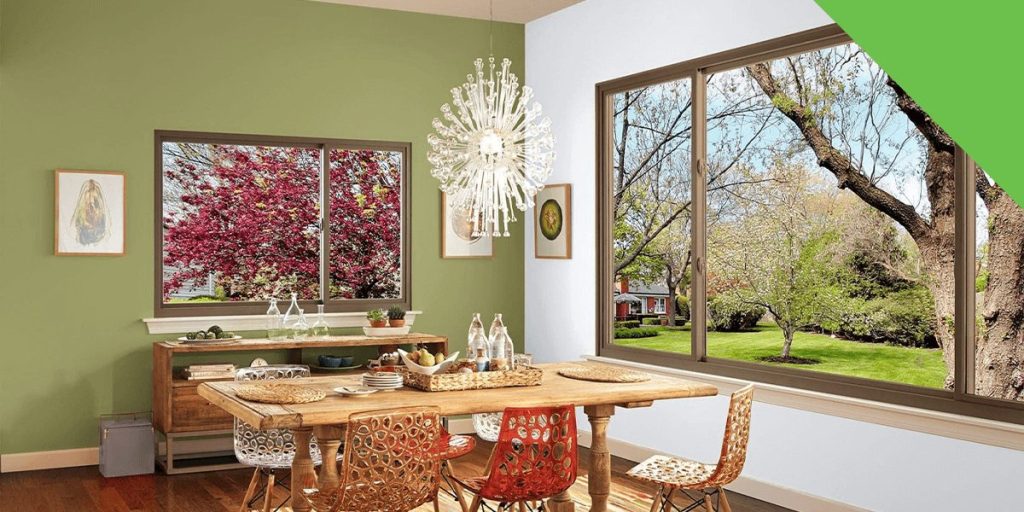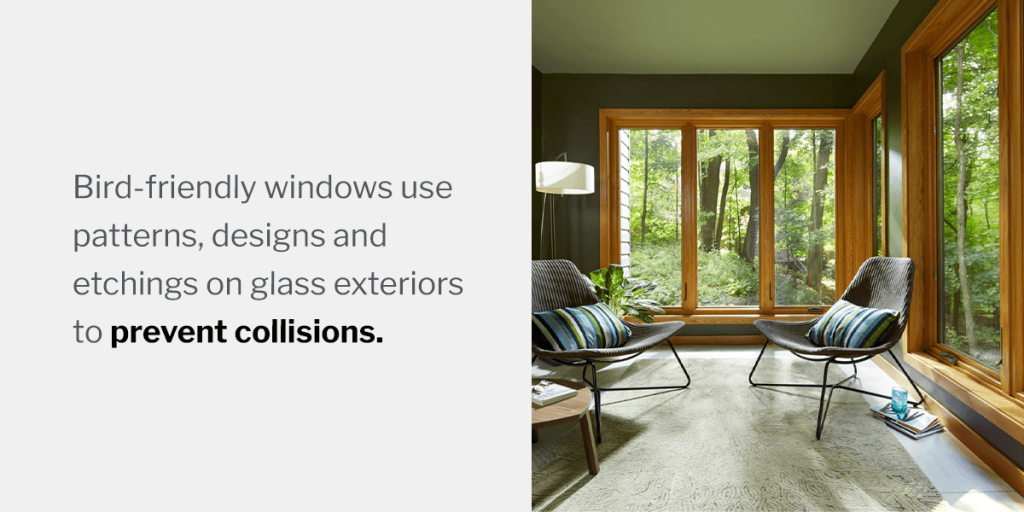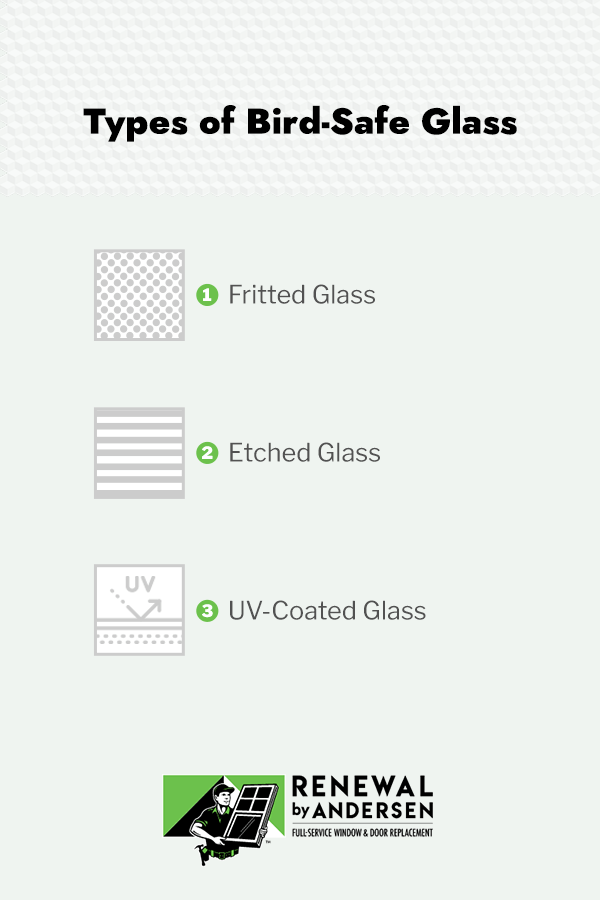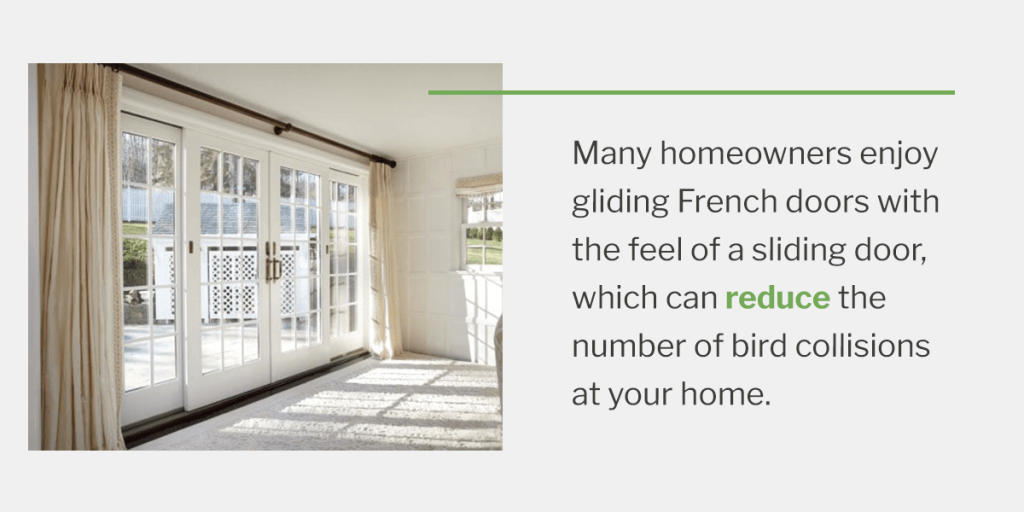MENU


Bird-friendly windows are an emerging technology many homeowners have started embracing. Homeowners and architects should take all measures to deter birds from fatal window glares and reflections. Explore why birds collide with glass and what new technologies can prevent this tragedy.
Almost 1 billion birds die in the United States every year due to window, structure and building collisions. Contractors, fabricators and architects have studied and tested products, collision causes, bird behavior and possible solutions to reduce these needless deaths. As a result, many new technologies have emerged, from UV technology to glazing, etches and frits. Now, you can fit your home with new bird-safe glass.
Why are bird-window collisions such a frequent occurrence? For one, many cities are adding tall buildings such as skyscrapers. You may have seen sad headlines about entire flocks getting disoriented and flying into buildings. Though high-rises get all the attention, birds collide with suburban homes and other smaller structures at a much higher rate.
Buildings contribute to bird collisions in the following ways.
Bird-friendly windows use patterns, designs and etchings on glass exteriors to prevent collisions. Since plain glass is often invisible to birds, these visual markers are essential to alert them that the window is a solid barrier they cannot fly through.

Spreading the visual markers across the windows’ entire surface distorts or mutes the reflections often responsible for bird collisions. Birds will understand that the windows are solid and stay away from them.
Visual markers often follow the two-by-four rule, which states that closer patterns on the glass have a higher chance of reducing bird collisions. If you want to add bird-safe glass to your home to prevent collisions, many options exist for new buildings, retrofits and existing renovations.

Fritted glass is most noticeable, but offers the most protection against bird collisions. If humans can see the window, so can birds. Frit patterns are economical and effective, and have earned approval from the American Bird Conservancy. Fritted windows will obstruct your view, so consider another option if you want to protect birds but still enjoy looking outside. Fritted glass windows are a quick solution for making your windows bird-safe. You can also combine them with other technologies.
Etched glass makes windows translucent. It will be slightly visible but can be very effective against bird collisions. Fabricators use acid-etching techniques to create markings along the glass surface. Birds will see these and identify the windows as solid objects. Some etched glass designs include abstract patterns, dots or vertical and horizontal lines. Many homeowners prefer etched glass over other technologies, as highly rated designs are available. The glass type also offers benefits like thermal resistance and performance.
UV-coated glass provides excellent window visibility while deterring potential bird collisions. While humans can only see in the visible light spectrum, many birds see UV light, making ultraviolet windows an excellent way to reduce bird collisions and fatalities. A UV coating indicates a barrier that birds can learn to avoid.
Most birds can see between 300 and 400 nanometers within the ultraviolet light spectrum, but humans cannot. Manufacturers include UV strands within the glass that resemble spiderwebs and discourage birds from flying into the windows.
While species like hummingbirds can see ultraviolet light, others, like geese, might find the light less visible. Depending on your location, consider whether UV-coated glass is a good option.
The Material Threat Factor is a system developed by the American Bird Conservancy. It can help manufacturers create bird-friendly glass and guides homeowners to purchase more humane windows. According to the system, every kind of glass receives a score to measure a bird’s ability to see and avoid it. Manufacturers and architects can use this information when designing homes and buildings.
Through the Material Threat Factor and the LEED rating system, homes and businesses may also receive credit for reducing bird collisions, incentivizing property owners who want to protect more animals’ lives.
The American Bird Conservancy determines glass ratings by sending wild songbirds down a dark tunnel. At the far end, two glass panels offer apparent exit routes. One of the panes is clear and unmarked, while the other has visual markers. The glass receives its score based on the number of birds who fly toward the patterned test windowpane.
Learning the bird deterrence legislation in North America can help you keep up with rules and regulations in your state, city or province. Local authorities enforce most legislation, but you should do your best to adhere to safety standards such as the following.
Many cities in the United States and Canada continue to adopt bird-safe rules and laws. Contact local authorities to learn more about your county, state or province’s safety rules and regulations. Communicate with local architects and manufacturers to learn what you can do to source bird-friendly glass and enforce legislation.
While new technology is the safest way to protect birds from running into your windows, you can take a few other steps to prevent bird collisions. If you want to combine these methods with bird-safe glass or want to deter collisions until you can get the new glass installed, consider these four options.
Many birds collide with windows because they don’t see them as solid barriers. They might not realize the window could hurt them or does not offer a clear passage. Try installing glass décor or decals on the surface to make the birds aware of the solid barrier. A bird may still try to fly through if it notices a clear spot. Consider additions like stickers, tape or other decorative items like hanging plants or sun catchers to alert birds to the window’s presence. The most effective glass decals cover the entire window while still allowing light to shine through.
In many cases, having a bird feeder by the window may increase collisions. After they’ve finished eating, some birds may get distracted by window reflections or try to pass through if they think there is a clear passage. Place your bird feeder farther into your yard, away from your home’s windows and doors. You can still enjoy watching birds from a distance, while reducing the chances of possible collisions.
Changing your window designs can prevent bird collisions. For example, you can try various pictures and panes or install two or three vertical windows. Other windows do better with grilles to improve bird safety. Patterned glass or window additions can inform birds of solid barriers. You can also find exciting designs to fit your home’s aesthetic.
Large sliding patio doors may produce distracting glares or reflections. You can always replace your patio door with a different design featuring more interrupted glass. Many homeowners enjoy gliding French doors with the feel of a sliding door, which can reduce the number of bird collisions at your home.

While previously mentioned methods and bird-safe glass work to prevent bird collisions, some commonly used methods may not reduce the chance of bird collisions and may need to be more effective long-term. Avoid the following three solutions.
If you want to make your home more bird-safe, consider replacement windows with help from Renewal by Andersen. As a full-service window and door replacement company, we have the tools and services you need to perform reliable installations and replacements. Our company has superior, exclusive window options for you to choose from. With one of the nation’s best warranty coverages, we can improve your home design while reducing the chance of bird collisions in your area. Contact us today to speak to a representative or explore our services online.
